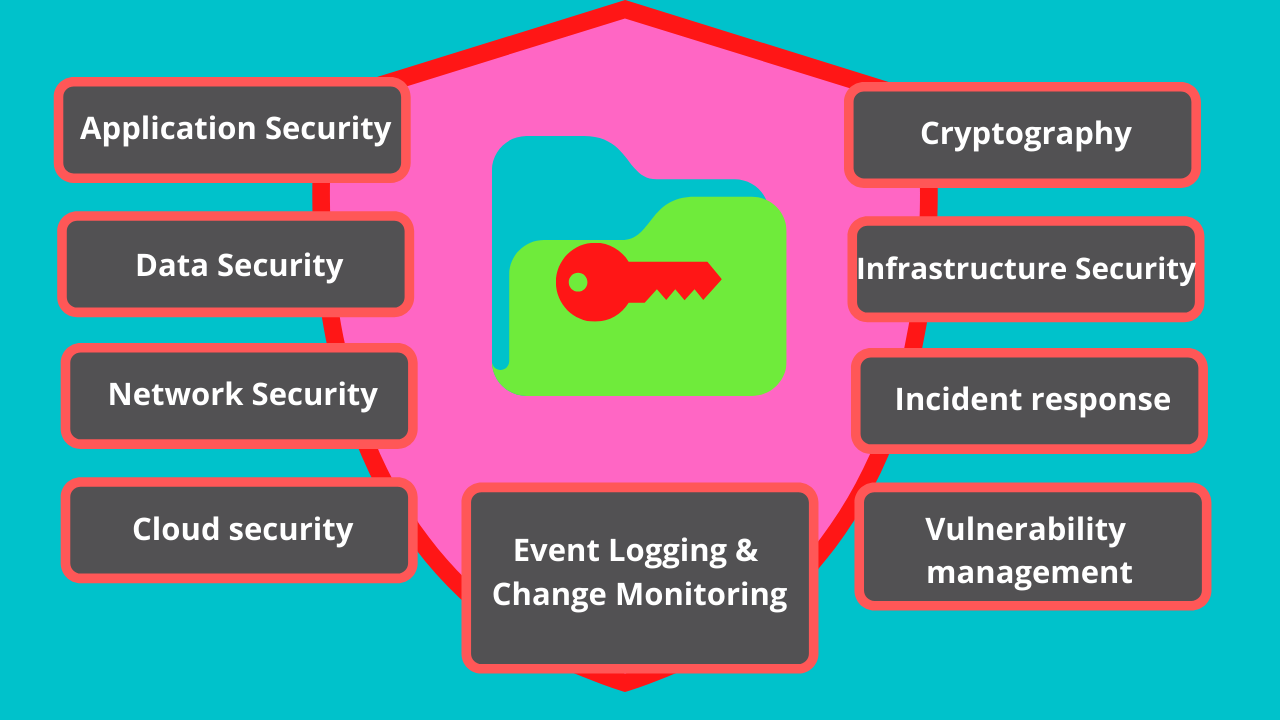Information security is the process of protecting information from misuse, theft, eavesdropping, and destruction. Information security is an important component of data protection, which seeks to preserve the confidentiality and integrity of data.
There are many types of information security strategies used by companies to protect their digital assets. The most popular ones are:
Also read :What is Information Security (InfoSec) | Amazing facts
1. Application Security
Application security is a broad topic that covers software vulnerabilities in web and mobile applications and application programming interfaces (APIs). The goal of application security is to find and fix vulnerabilities in software, and protect data and assets. Security engineers will be able to conduct more tests on the application before it is released.
2. Data Security
Data security is the most significant issue for maintaining data integrity in the era of digitization.Security has become a priority especially in an era when cyber crime and data breaches are more prevalent than ever.
Cyber criminals are always looking for ways to steal data from individuals, corporations, governments, and even national security agencies. They employ a wide range of tools to steal sensitive information, including malware, phishing scams, spear-phishing attacks etc.,
Data breaches have become a common occurrence in today’s Internet-enabled world. This is not surprising because people are constantly sharing their information online without realizing they are creating risks for themselves and others they interact with on the Internet.
Also read: Top Cloud Security Companies & Tools 2022
3. Network Security
Network security is a broad term that covers a multitude of technologies, devices and processes. In its simplest term, it is the process of keeping unauthorized people from accessing or modifying your data.
Network security can be achieved with various methods. The most common are encryption, firewalls, VPNs and intrusion detection systems. Network security is an important topic for anyone in today’s digital age. With cyber security rapidly growing in importance, businesses are spending more time and resources to protect their networks.
4. Cloud security
Cloud security focuses on building and hosting secure applications in cloud environments and securely consuming third-party cloud applications. “Cloud” simply means that the application is running in a shared environment.
5. Cryptography
Encryption is one of the most important technologies for ensuring data confidentiality. It helps to protect data from unauthorized access by encrypting it, which makes it unreadable to anyone without the key. Digital signatures are used in cryptography to authenticate or validate that encrypted data is authentic.
6. Infrastructure security
Infrastructure security is essential for companies of all sizes. The internet is the way in which business is conducted and information shared with customers, suppliers, and partners. While most organizations are aware of this, they still do not take the appropriate measures to protect their digital assets.
The most common reason why companies don’t invest in infrastructure security is because it seems too expensive or difficult to handle on their own. However, this should not be a reason for them to neglect an important aspect of their business.
There are some important steps small firms can take to improve their infrastructure security. That includes using third party cloud providers, investing in network monitoring tools, and ensuring that all employees have two-factor authentication setup on their devices.
Also read: ISO 27017 – A global standard for Cloud Security
7. Incident response
Incident response is a crucial function in the field of cybersecurity. It is the function that monitors for and investigates potentially malicious behavior. Incident response experts are also responsible for developing contingency plans to counter potential security breaches which could lead to disastrous consequences.
The Incident response team should always be on their toes because cyber criminals are always looking for new angles to exploit weaknesses in an organization’s system without being detected. The experts need to be vigilant and have the ability to think creatively so they can quickly figure out how to counteract any potential threats which could lead towards disastrous consequences.
8. Vulnerability management
Vulnerability management is the process of scanning an environment for weak points (such as unpatched software) and prioritizing them based on the level of risk they pose to infrastructure. There are various ways in which vulnerability management can be executed, such as manual steps, automated tools, and self-service capabilities.
Manual steps are often used in conjunction with other methods because it’s not always possible to use automated tools or self-service capabilities to adequately explore the environment. This is because manually assessing vulnerabilities requires a certain amount of skill and experience, which can’t be provided by AI alone. However, it’s still important to have an automated tool that can do routine checks for servers or endpoints that don’t need extensive analysis.
9. Event Logging & Change Monitoring
Logs are the most important part of monitoring. They are the source of data that is used to generate reporting and audit trails.Auditing and event monitoring can be done manually or by using an automated solution. Automated solutions usually provide more features than manual auditing, for example, it helps you automate event monitoring, reduce labor costs and provides better insights into your security posture.
Also read: The All-inclusive Cisco SASE (Secure Access Service Edge). Explained

